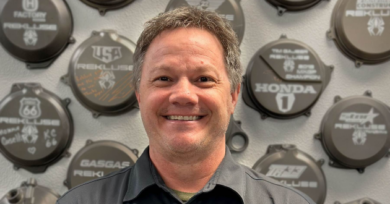Leasing option expands to powersports – August 14, 2006
Leasing, a popular financing option in the auto industry, has yet to reach the same level of interest in the powersports industry. That could change as rising interest rates figure to make consumers and dealers look more closely at the potentially lower monthly payments that leasing offers.
Less than 1 percent of the new bike buyers surveyed in the recent J.D. Power & Associates survey used leasing to finance their new motorcycles in 2005. That minute number isn’t surprising to Ed Menken, vice president of marketing for Sparta Commercial Services, Inc., a full-service financial services company.
Sparta, as far as Menken knows, is the only financial institution offering the option to powersports dealers. And because Sparta works directly with dealers, the company does not advertise to consumers.
“Even the dealers who love us and give us a lot of business, it’s a little bit of an uphill struggle to get them familiar with leasing,” Menken said from his Houston office. “The exception with the rule is when you’ve got people coming out of the car business. Because if they come out of the car business, they know leasing.”
Of course, the main difference between leasing and the traditional installment financing plan is the financial institution, in this case Sparta, owns the vehicle, not the consumer.
“From a dealer’s point of view, it’s no different,” Menken said, comparing leasing to installment financing, “because we’re buying the unit from them no matter what.”
Here’s a brief look at Sparta’s leasing program, called the Flex Lease:
“Most people prefer to do an install and end up owning the bike outright,” said Walt Jakobowski, the owner of Victory of South Florida. But, the leasing program lets them “establish a credit history again, which they wouldn’t have gotten with a Tier 1 or Tier 2 lender and gets them back on the road again.”
Jakobowski said the dealership has used the leasing program since the beginning of this year. “We haven’t heard any negatives from people who have used the program,” he said. “It certainly has allowed them to get into a bike when they otherwise wouldn’t have been able to do it.”
Kirk Dendy, owner of South Haven Kawasaki Yamaha, South Haven, Miss., uses the leasing program as a “last resort” to get customers approved for financing.
“We’ve gotten numerous approved deals that we otherwise would have to send packing,” said Dendy, who has used the program for a couple of months. “I haven’t been able to convert 100 percent of the approvals into actual sales, but we’ve been able to get a rather high percentage of them.”
Dendy said the main sticking point for customers who have been approved but are hesitant to take the lease is the residual payment at the end. To alleviate that concern, Dendy advises customers put 10 percent of their monthly payment into a savings account. At the end of the term of the lease, that saving account would be large enough to make the residual payment easier to pay off.
“If they decide not to keep the vehicle,” Dendy said, “I as the dealer get the first right of refusal (on the used vehicle). So it’s a pretty good deal for the dealer actually.”
The leasing program also is being used at Southern Honda Powersports, Chattanooga, Tenn., one of the nation’s largest Honda dealers in terms of units sold per year.
“We started out using it as a bad credit option,” said Lisa Williams, Southern Honda’s finance manager, “but then we found that it has benefits for good credit people as well as bad credit people.”
The lease program has to be sold to consumers, who are largely unaware of the option, Williams said. “People are naturally leery of something they don’t understand. But once you sit down and explain it to them and show the benefits of it, they like it.”




